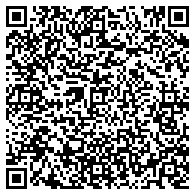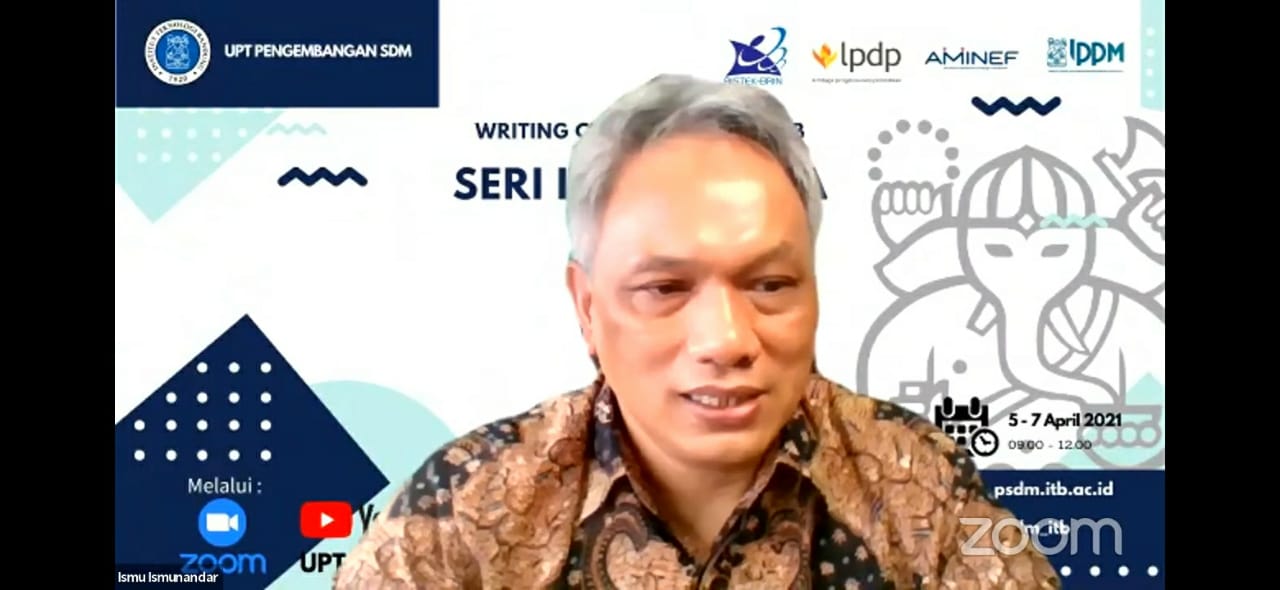LPPM ITB Workshop Series: Kitchen Secrets for Publishing Scientific Paper in International Journal

BANDUNG, itb.ac.id – Institute for Research and Community Service (LPPM) Institut Teknologi Bandung (ITB) held the fourth webinar of its LPPM ITB Workshop Series on Tuesday (27/07/2021). This webinar was titled "Beginner Scientific Article Writing Workshop for International Journal Publication". The event which presented Aqsha Aqsha, Ph.D., and Kiki Adi Kurnia, Ph.D. was held virtually via Zoom meeting and broadcasted via LPPM ITB YouTube channel.
Aqsha Aqsha, the first speaker, presented his topic of journal selection strategy and manuscript submission process. According to him, the first step of selecting the journal is to list the available journal sites.
"Just chose seven journals, it can be Scopus or other journals, then classify the journal by its impact. This step is important so that we can later collect feedback on our research as well as broaden our target audience," said Aqsha.
In this workshop, Aqsha visited some journals websites to find out the scope, policies, and styles of the scientific articles that were published. He then explained the process of journal peer review and some applications that can help us in selecting journal publishers.
The journal publishers themselves have many different policies. There are paid publishers, free publishers, even the 'predatory-type' publishers. Aqsha said that when choosing a journal publisher, we need to be careful in determining the best and most suitable journal publisher. One of the ways to do this is to check the publisher's credibility. In addition, the writer needs to recall its objective in publishing a scientific article: Whether you need a large scope of audience or not?
"As a writer, we need to think strategically, for example by making the right choice of submitting our scientific article on the certain popular publisher. Two things that we need to look out for are how big the journal's impact is and how accessible it is.
Aqsha then continued by explaining the journal's metric. According to him, the journal's metric is determined by the number of articles that were published, the number of journals that were cited, the number of citations per article, and the impact of published articles.
In the next presentation, they discussed about the manuscript submission process. In this session, the author is expected to have a clear objective on publishing a scientific article, to determine its manuscript type, and then confirm the journal publisher's policies. The process of manuscript submission begins by confirming the requirements with the editor, then submitting our article to the editor, and then by adjusting our article with the publisher style, which is then resubmitted to the editor. Later the editor will determine whether our manuscript is completely rejected, given a note of improvement, or will be immediately published.
In essence, scientific articles can be published in the international journal by carefully consider these few things: 1. Not submitting our article to two publishers at the same time, 2. Not using excessive conclusions, 3. Using good and correct English.
In the next session, Kiki Adi Kurnia explained how to conveniently write an article in English and analyze the structure of an article. According to him, writing a scientific article is like writing a story. You need to create the plot, design the article structure, arrange the sentences, and even making sure our article has a great conclusion.
"While writing, make sure the sentences are composed of subject, verb, object, and adjective. Accustom yourself by writing a simple sentence at first. Avoid using the word 'which' excessively, because it will make your article difficult to interpret," said Kiki.
You can also use some applications to help you make your English article much more readable. Some of the applications that Kiki suggested are Microsoft Word editor and Grammarly.
Kiki then continued his presentation by explaining the order of the scientific article. The structure of the scientific article is composed of a title, abstract, introduction, methodology, research results and discussion, conclusion, and research reference. "To appreciate our students, we can put their name as the main author. The lecturer's name will be put as the co-author," he said.
Kiki continued by sharing the tricks on how to make a good title. According to Kiki, the three characteristics of a good title are brief, concise, and clear. In addition, a title should be unambiguous so that the readers won't be confused. Also, try not to use abbreviations in the title because reviewers or readers can misunderstand our title.
About the abstract session, according to Kiki, this is the most important session of a scientific paper because it is the first session that will be read by the visitors. In other words, an abstract is the main attractor of the potential reader. Then, in writing the introduction, we need to make sure it is written sequentially and well-structured, starting from its theme, correlation with the research topic, explaining the limitation of previous research, and then ended with the final objective of this scientific paper.
As a closing remark, Kiki said that in order to create a solid scientific paper, we can accustom ourselves by reading many similar scientific articles. As a final note – on the discussion session – the author is expected to just write the research results without any exaggeration and immediately jump to its conclusions. To provide a better understanding, the author can connect a chapter of the article with some previous chapters using theoretical quotations marks.
Reporter: Zahra Annisa Fitri (Urban and Regional Planning, 2019)
Translator: Favian Aldilla R (Civil Engineering, 2019)

scan for download







